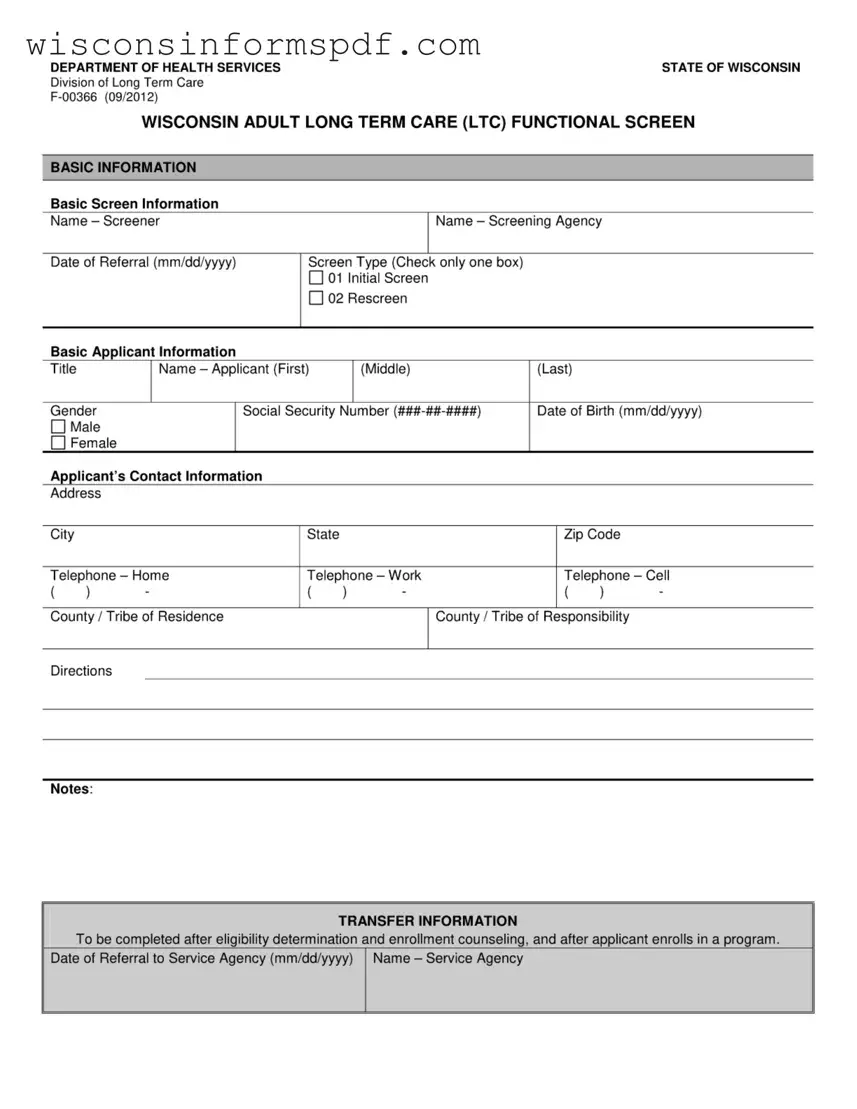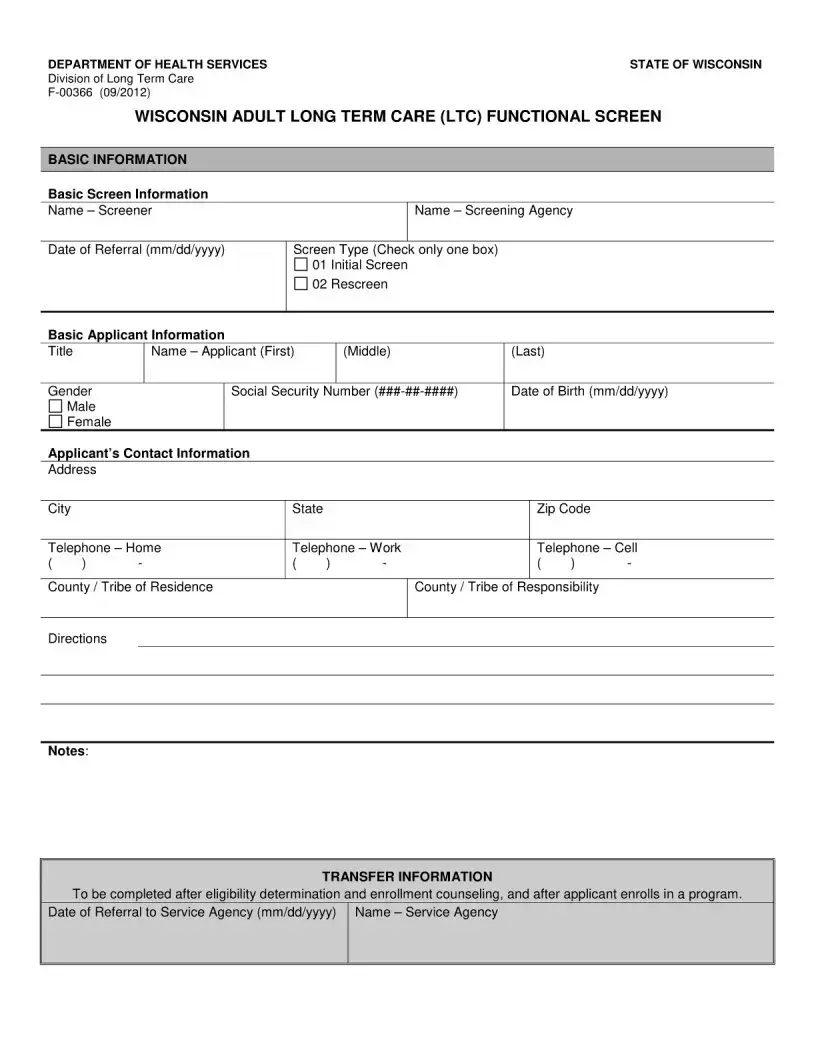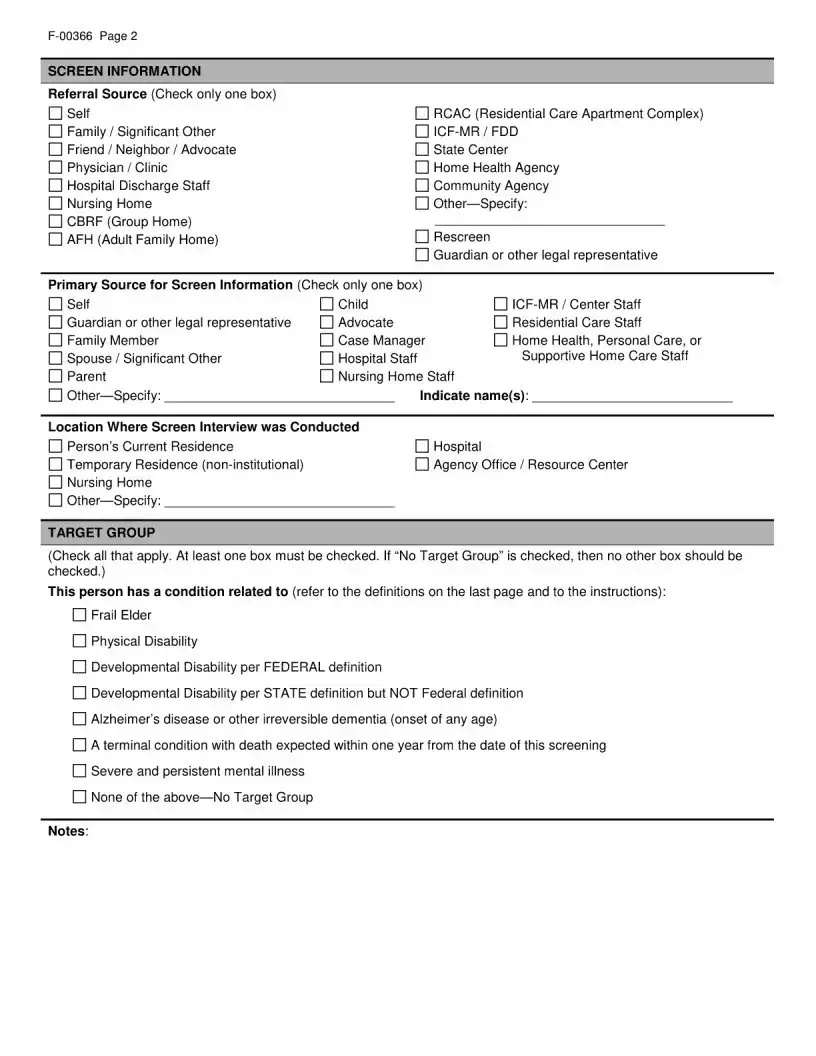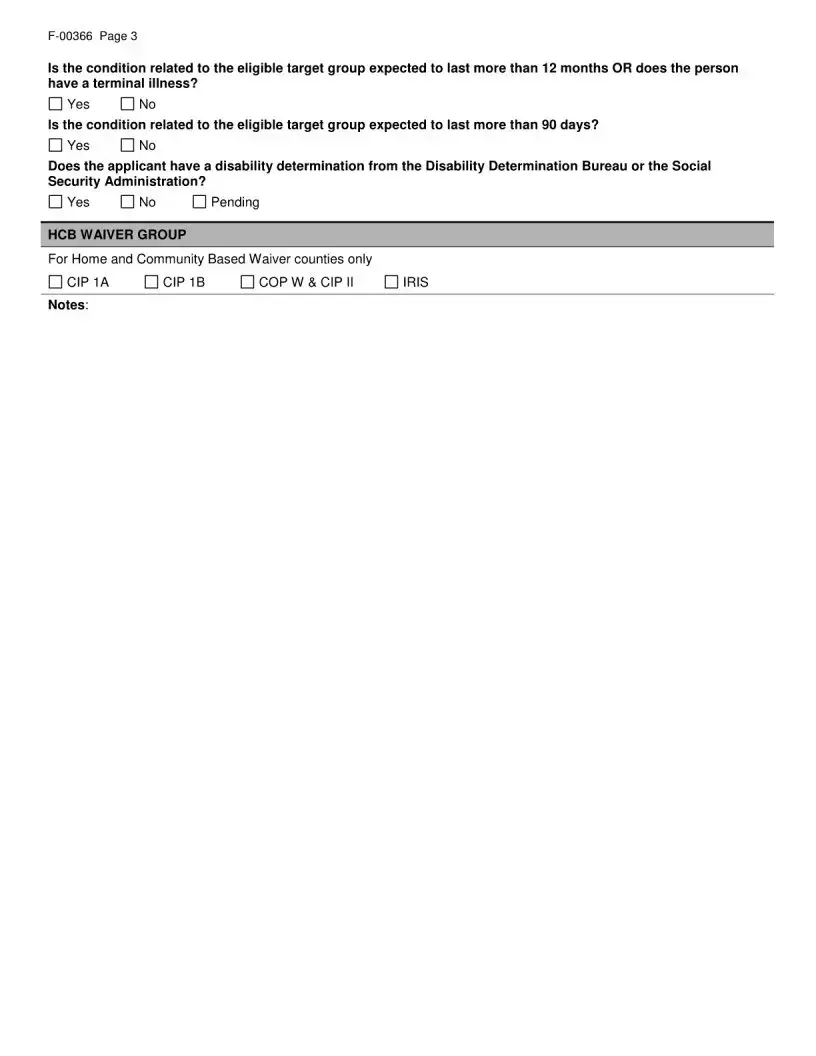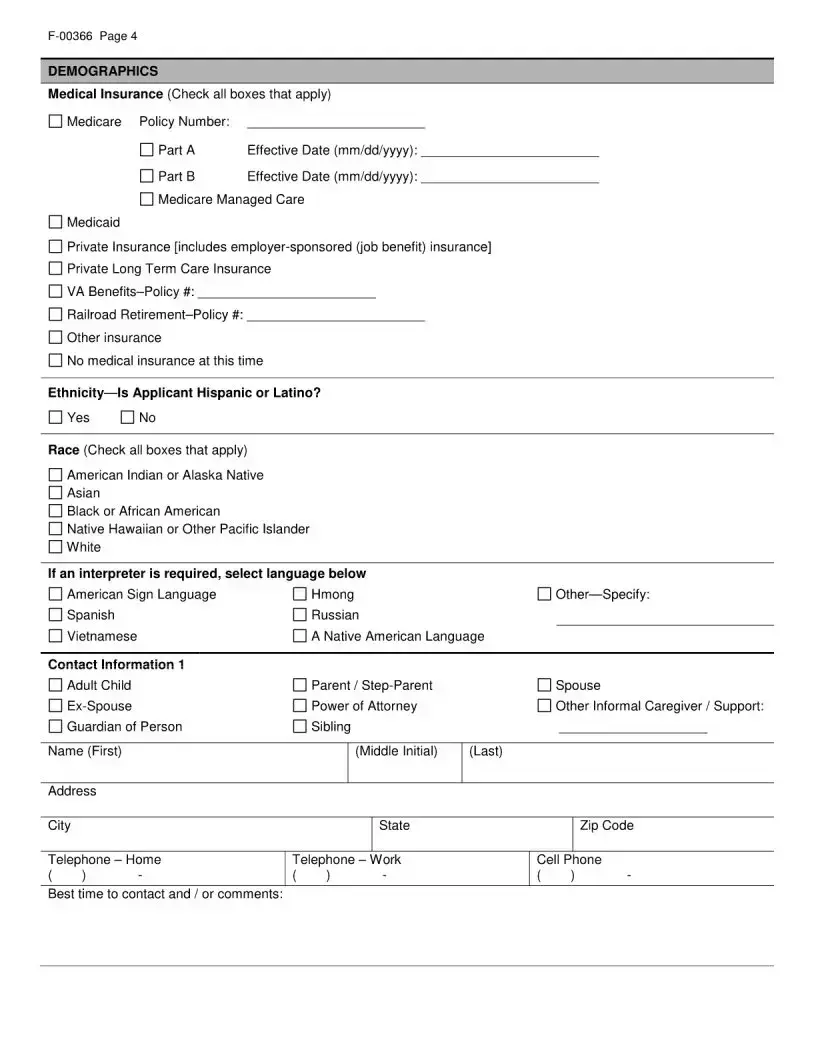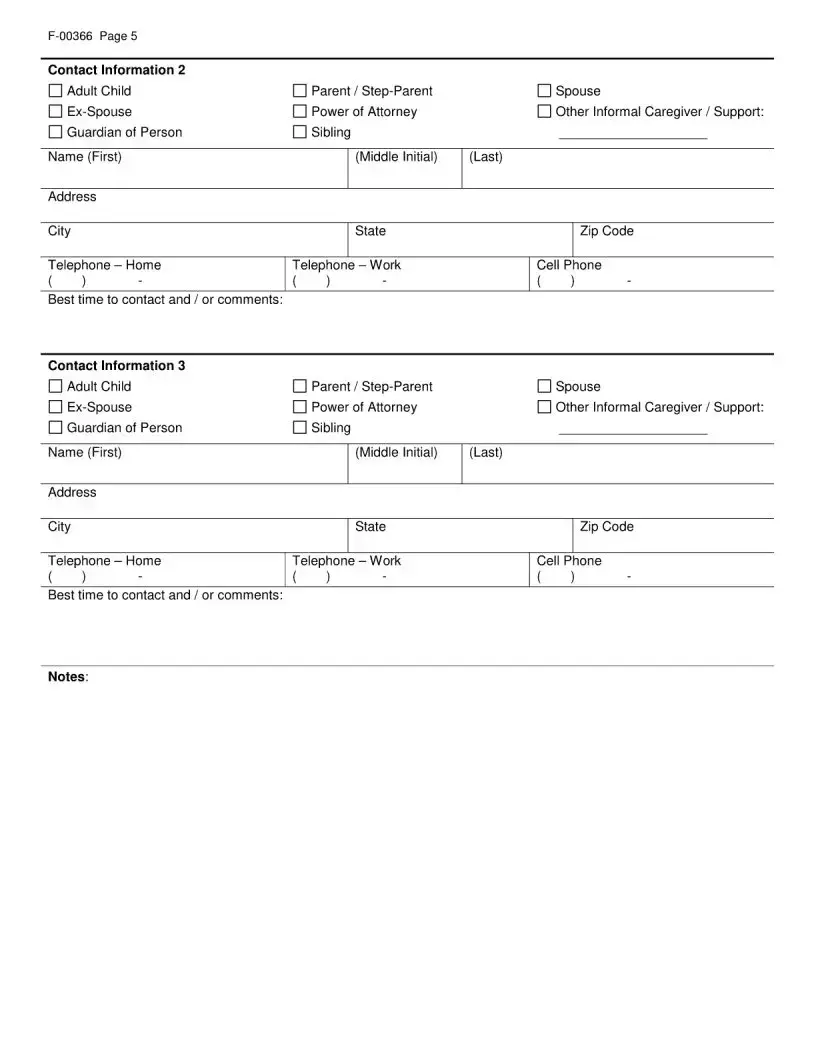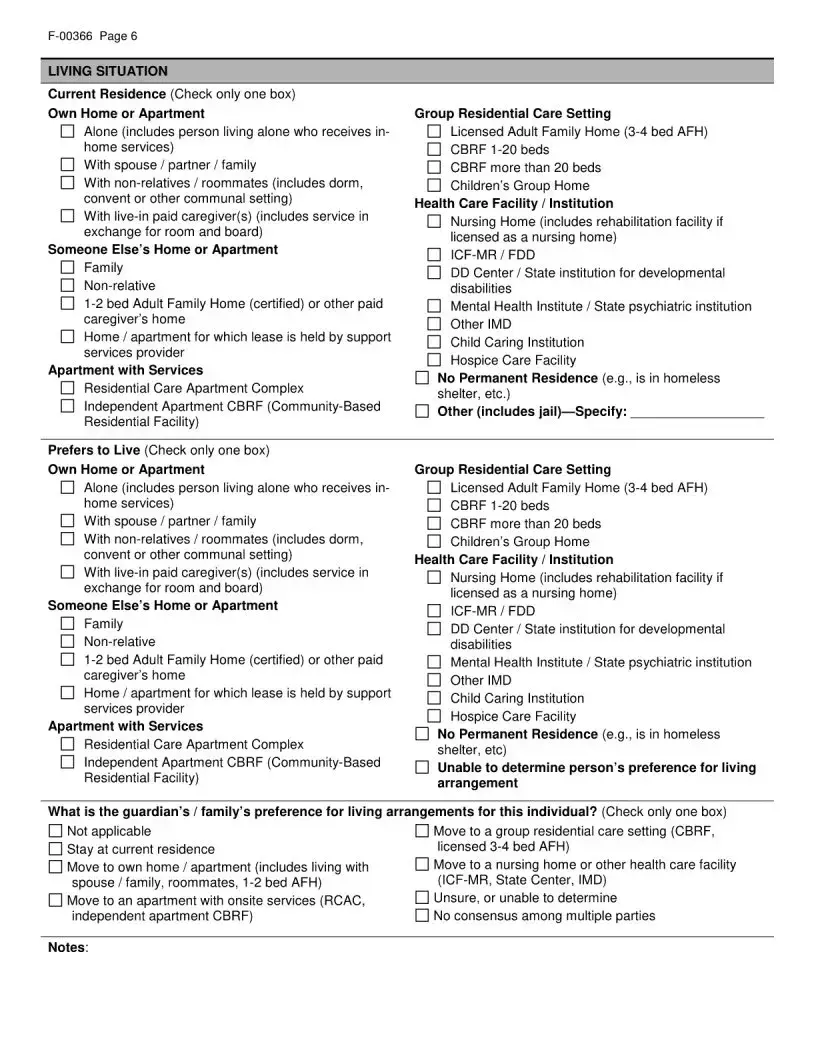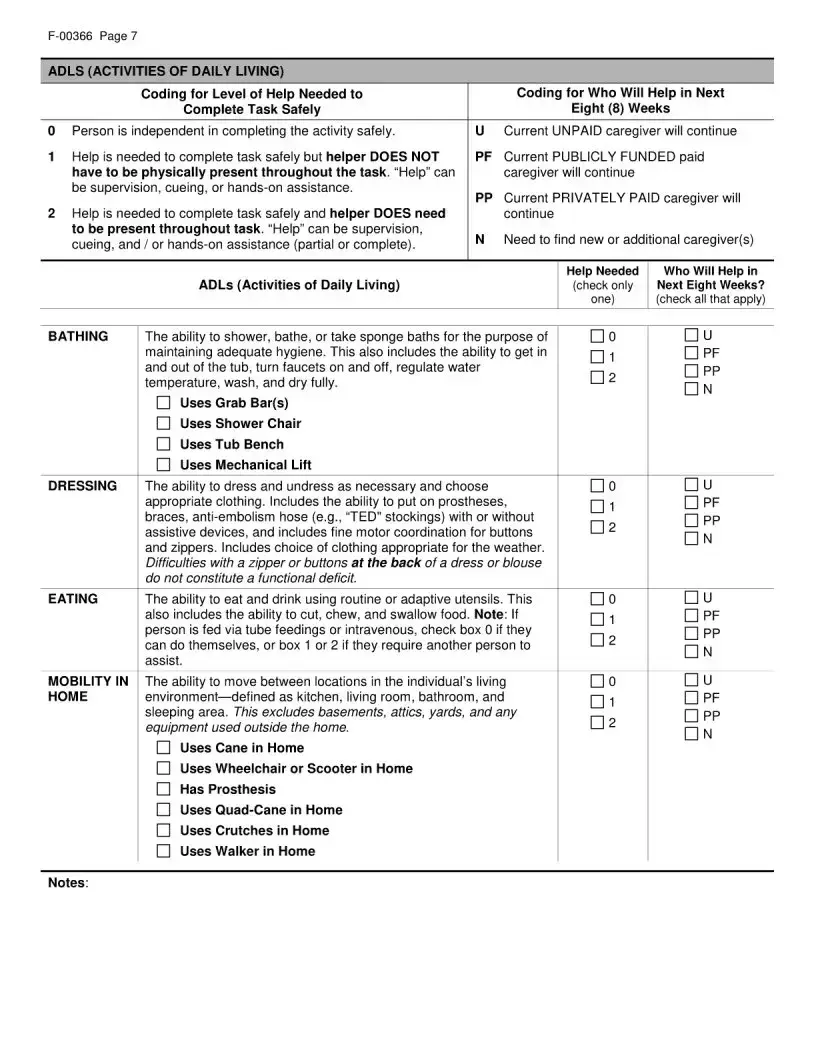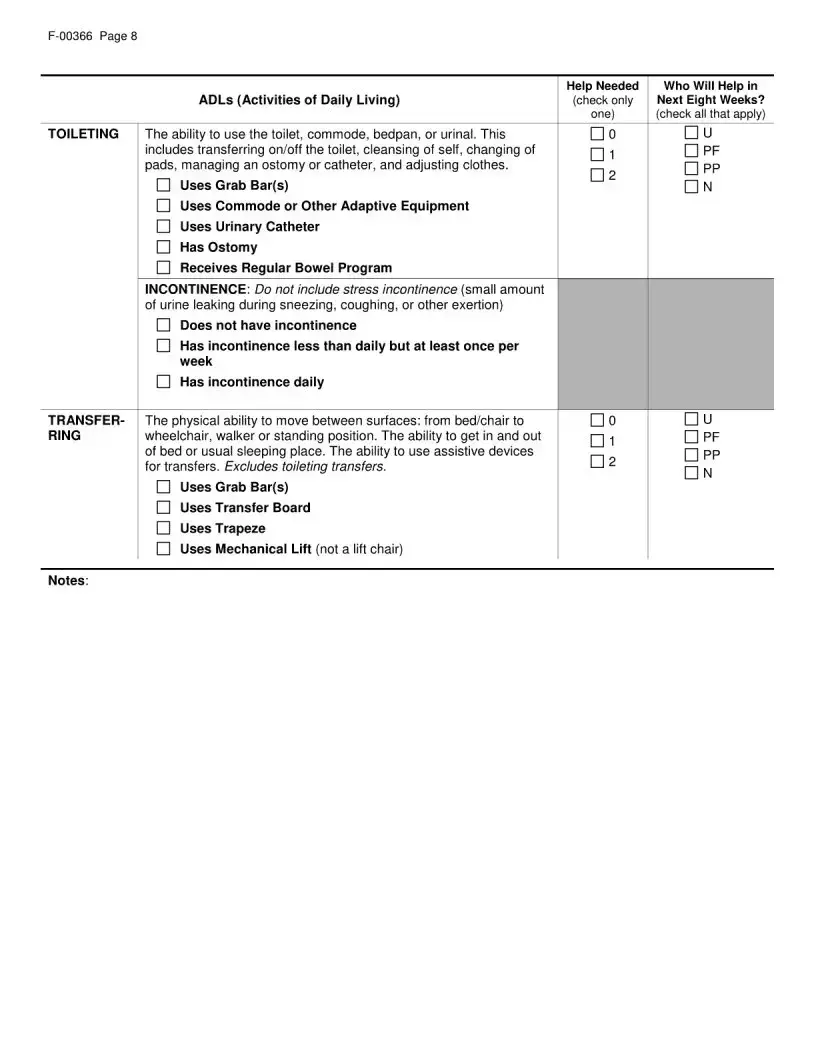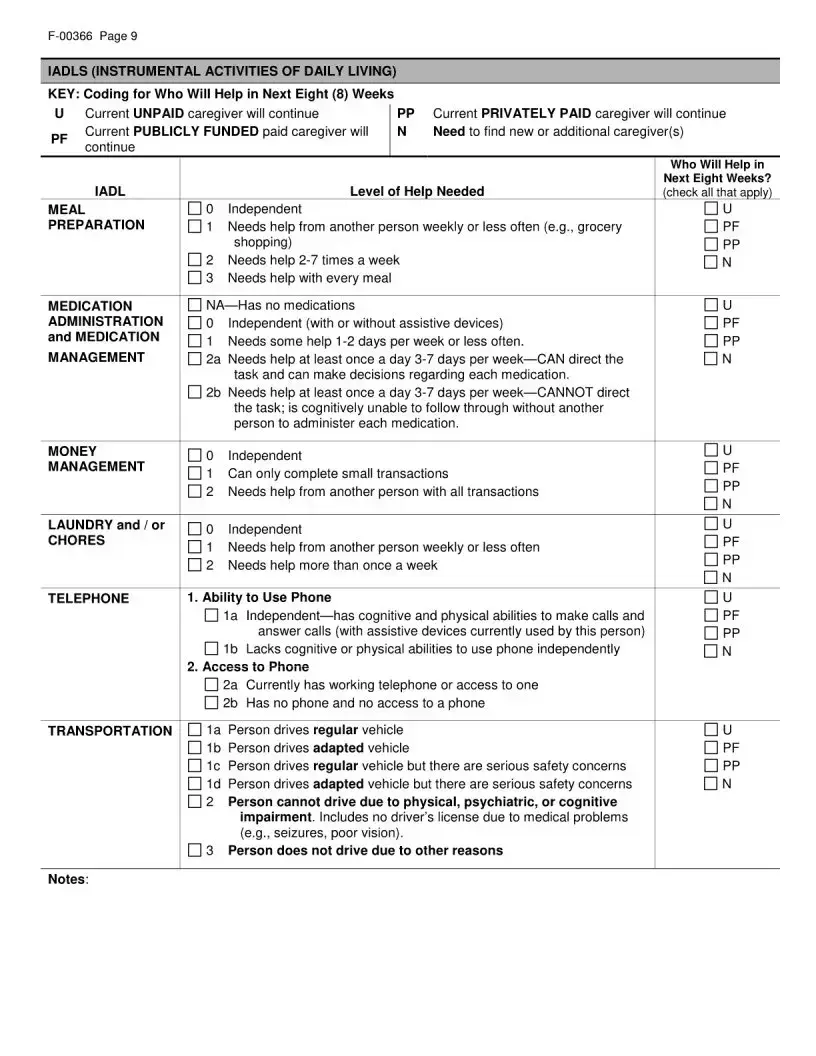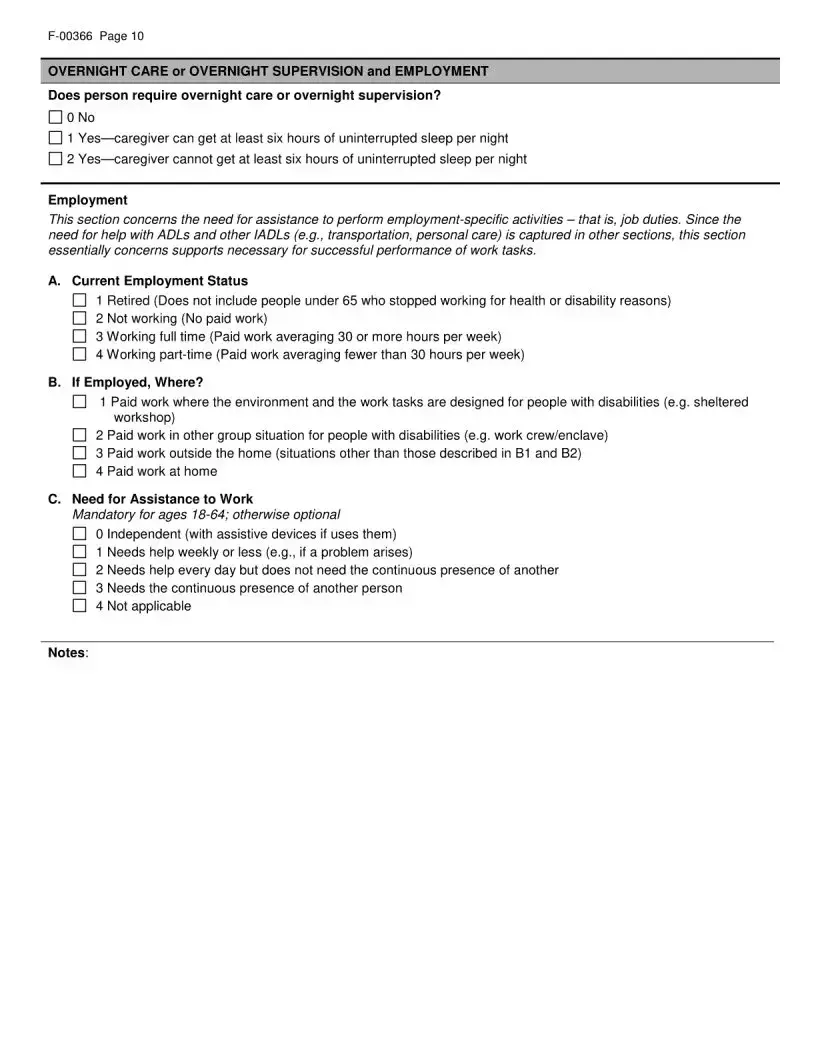What is the Wisconsin F 00366 form used for?
The Wisconsin F 00366 form is designed for the application process related to certain state-specific benefits or programs. It serves as a formal request to access services or support provided by state agencies in Wisconsin, typically related to health, education, or welfare programs.
Who should fill out the Wisconsin F 00366 form?
Individuals residing in Wisconsin who seek to apply for state-administered programs or benefits that require this form should fill it out. It is important that applicants meet the criteria or eligibility requirements for the program they are applying to.
Where can one obtain the Wisconsin F 00366 form?
This form can be obtained from the official website of the relevant Wisconsin state department overseeing the specific program or benefit. In some cases, local government offices, libraries, or community centers may also have copies available.
Is assistance available for completing the form?
Yes, assistance for completing the form is often available. Applicants can usually seek help from the department that provides the form or from various nonprofit organizations that offer support in accessing state services. Detailed instructions are often provided with the form itself.
What information is required to fill out the Wisconsin F 00366 form?
The specific information required can vary depending on the program or benefit applied for. Generally, personal information, including name, address, contact details, and information pertinent to eligibility for the program, such as income or health status, may be required.
How should the completed Wisconsin F 00366 form be submitted?
Submission instructions are typically provided with the form. The completed form can usually be submitted either online, through mail, or in person at the office designated by the issuing state department.
Is there a filing fee for the Wisconsin F 00366 form?
Most state forms, including the Wisconsin F 00366, do not require a filing fee. However, it is recommended to check the specific instructions or contact the issuing department to confirm if a fee applies.
What is the processing time for applications submitted with the Wisconsin F 00366 form?
The processing time can vary widely depending on the specific program and the volume of applications received. Applicants can often find estimated processing times on the state department’s website or by contacting them directly.
How will I know if my application using the Wisconsin F 00366 form has been approved?
Applicants are typically notified of their application status via mail or email. Some departments may also offer online tracking tools through their websites, where applicants can check the status of their application.
What should I do if my application using the Wisconsin F 00366 form is denied?
If an application is denied, the state department usually provides a reason for the denial and information on how to appeal the decision or correct any issues with the application. Following the suggested steps or seeking legal advice can help address the matter.
